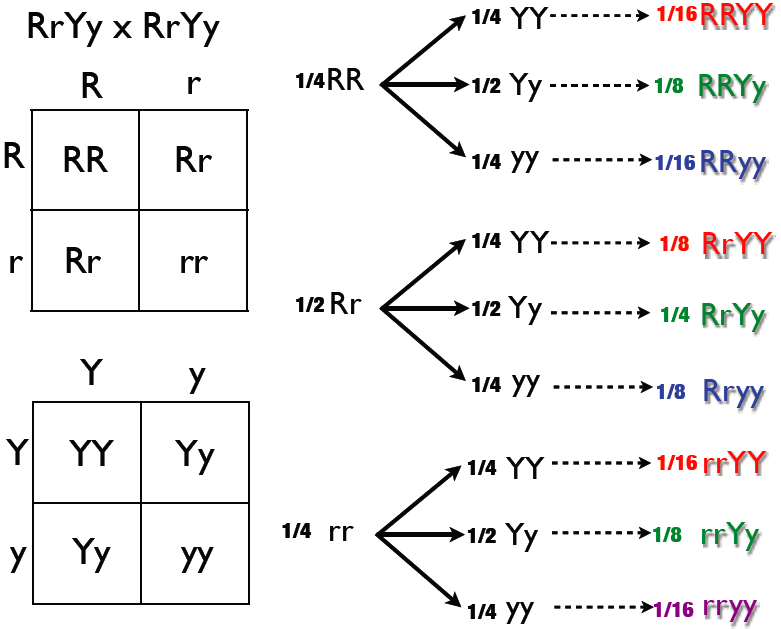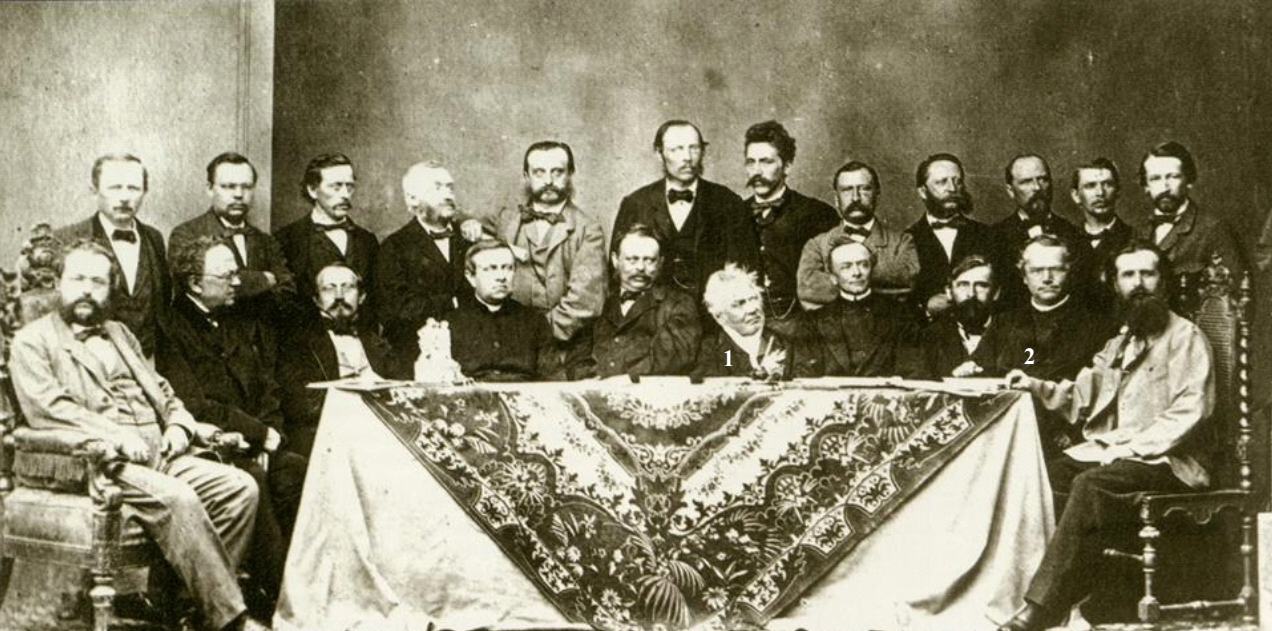|
Reginald Punnett
Reginald Crundall Punnett FRS (; 20 June 1875 – 3 January 1967) was a British geneticist who co-founded, with William Bateson, the ''Journal of Genetics'' in 1910. Punnett is probably best remembered today as the creator of the Punnett square, a tool still used by biologists to predict the probability of possible genotypes of offspring. His ''Mendelism'' (1905) is sometimes said to have been the first textbook on genetics; it was probably the first popular science book to introduce genetics to the public. Life and work Reginald Punnett was born in 1875 in the town of Tonbridge in Kent, England. While recovering from a childhood bout of appendicitis, Punnett became acquainted with Jardine's Naturalist's Library and developed an interest in natural history. Punnett was educated at Clifton College. Attending Gonville and Caius College, Cambridge, Punnett earned a bachelor's degree in zoology in 1898 and a master's degree in 1901. Between these degrees he worked as a ... [...More Info...] [...Related Items...] OR: [Wikipedia] [Google] [Baidu] |
Tonbridge
Tonbridge ( ) (historic spelling ''Tunbridge'') is a market town in Kent, England, on the River Medway, north of Royal Tunbridge Wells, south west of Maidstone and south east of London. In the administrative borough of Tonbridge and Malling, it had an estimated population of 41,293 in 2019. History The town was recorded in Domesday Book 1086 as ''Tonebrige'', which may indicate a bridge belonging to the estate or manor (from the Old English tun), or alternatively a bridge belonging to Tunna, a common Anglo-Saxons, Anglo-Saxon man's name. Another theory suggests that the name is a contraction of "town of bridges", due to the large number of streams the High Street originally crossed. Until 1870, the town's name was spelt ''Tunbridge'', as shown on old maps including the 1871 Ordnance Survey map and contemporary issues of the George Bradshaw, Bradshaw railway guide. In 1870, this was changed to ''Tonbridge'' by the General Post Office, GPO due to confusion with nearby Tunb ... [...More Info...] [...Related Items...] OR: [Wikipedia] [Google] [Baidu] |
Sir William Jardine, 7th Baronet
Sir William Jardine, 7th Baronet of Applegarth FRS FRSE FLS FSA (23 February 1800 – 21 November 1874) was a Scottish naturalist. He is known for his editing of a long series of natural history books, ''The Naturalist's Library''. Life and work Jardine was born on 23 February 1800 at 28 North Hanover Street in Edinburgh, the son of Sir Alexander Jardine, 6th baronet of Applegarth and his wife, Jane Maule. He was educated in both York and Edinburgh then studied medicine at Edinburgh University. From 1817 to 1821 he lodged with Rev Dr Andrew Grant at James Square, an arrangement made by his father. Grant was minister of St Andrew's Church on George Street. In his early years, aged only 25, he was elected a fellow of the Royal Society of Edinburgh his proposer being Sir David Brewster. He was a co-founder of the Berwickshire Naturalists' Club, and contributed to the founding of the Ray Society. He was "keenly addicted to field-sports, and a master equally of the rod and ... [...More Info...] [...Related Items...] OR: [Wikipedia] [Google] [Baidu] |
Macmillan (publisher)
Macmillan Publishers (occasionally known as the Macmillan Group; formally Macmillan Publishers Ltd in the United Kingdom and Macmillan Publishing Group, LLC in the United States) is a British publishing company traditionally considered to be one of the "Big Five" English language publishers (along with Penguin Random House, Hachette, HarperCollins and Simon & Schuster). Founded in London in 1843 by Scottish brothers Daniel and Alexander MacMillan, the firm soon established itself as a leading publisher in Britain. It published two of the best-known works of Victorian-era children's literature, Lewis Carroll's ''Alice's Adventures in Wonderland'' (1865) and Rudyard Kipling's ''The Jungle Book'' (1894). Former Prime Minister of the United Kingdom, Harold Macmillan, grandson of co-founder Daniel, was chairman of the company from 1964 until his death in December 1986. Since 1999, Macmillan has been a wholly owned subsidiary of Holtzbrinck Publishing Group with offices in 41 coun ... [...More Info...] [...Related Items...] OR: [Wikipedia] [Google] [Baidu] |
Punnett Square (Green Dominant)
The Punnett square is a square diagram that is used to predict the genotypes of a particular cross or breeding experiment. It is named after Reginald C. Punnett, who devised the approach in 1905. The diagram is used by biologists to determine the probability of an offspring having a particular genotype. The Punnett square is a tabular summary of possible combinations of maternal alleles with paternal alleles. These tables can be used to examine the genotypical outcome probabilities of the offspring of a single trait (allele), or when crossing multiple traits from the parents. The Punnett square is a visual representation of Mendelian inheritance, a fundamental concept in genetics discovered by Gregor Mendel. For multiple traits, using the "forked-line method" is typically much easier than the Punnett square. Phenotypes may be predicted with at least better-than-chance accuracy using a Punnett square, but the phenotype that may appear in the presence of a given genotype can in s ... [...More Info...] [...Related Items...] OR: [Wikipedia] [Google] [Baidu] |
Genetic Linkage
Genetic linkage is the tendency of Nucleic acid sequence, DNA sequences that are close together on a chromosome to be inherited together during the meiosis phase of sexual reproduction. Two Genetic marker, genetic markers that are physically near to each other are unlikely to be separated onto different Chromatid, chromatids during chromosomal crossover, and are therefore said to be more ''linked'' than markers that are far apart. In other words, the nearer two Gene, genes are on a chromosome, the lower the chance of Genetic recombination, recombination between them, and the more likely they are to be inherited together. Markers on different chromosomes are perfectly ''unlinked'', although the penetrance of potentially deleterious alleles may be influenced by the presence of other alleles, and these other alleles may be located on other chromosomes than that on which a particular potentially deleterious allele is located. Genetic linkage is the most prominent exception to Gregor M ... [...More Info...] [...Related Items...] OR: [Wikipedia] [Google] [Baidu] |
Edith Rebecca Saunders
Edith Rebecca Saunders Fellow of the Linnean Society, FLS (14 October 1865 – 6 June 1945) was a British geneticist and plant anatomy, plant anatomist. Described by J. B. S. Haldane as the "Mother of British Plant Genetics", she played an active role in the Mendelian inheritance, re-discovery of Mendel's laws of heredity, the understanding of trait inheritance in plants, and was the first collaborator of the geneticist William Bateson. She also developed extensive work on flower anatomy, particularly focusing on the gynoecia, the female reproductive organs of flowers. Biography Saunders was born on 14 October 1865 in Brighton, England. She was educated first at Handsworth Ladies' College and in 1884 she entered the female-only Newnham College, Cambridge. There, she attended both Part I (in 1887) and II (in 1888) of the Natural Sciences (Cambridge), Natural Sciences Tripos. She continued to post-graduate research, and served as a demonstrator at the Balfour Biological Laboratory ... [...More Info...] [...Related Items...] OR: [Wikipedia] [Google] [Baidu] |
Mendelian Genetics
Mendelian inheritance (also known as Mendelism) is a type of biological inheritance following the principles originally proposed by Gregor Mendel in 1865 and 1866, re-discovered in 1900 by Hugo de Vries and Carl Correns, and later popularized by William Bateson. These principles were initially controversial. When Mendel's theories were integrated with the Boveri–Sutton chromosome theory of inheritance by Thomas Hunt Morgan in 1915, they became the core of classical genetics. Ronald Fisher combined these ideas with the theory of natural selection in his 1930 book '' The Genetical Theory of Natural Selection'', putting evolution onto a mathematical footing and forming the basis for population genetics within the modern evolutionary synthesis. History The principles of Mendelian inheritance were named for and first derived by Gregor Johann Mendel, a nineteenth-century Moravian monk who formulated his ideas after conducting simple hybridization experiments with pea plants ... [...More Info...] [...Related Items...] OR: [Wikipedia] [Google] [Baidu] |
Hugo De Vries
Hugo Marie de Vries (; 16 February 1848 – 21 May 1935) was a Dutch botanist and one of the first geneticists. He is known chiefly for suggesting the concept of genes, rediscovering the laws of heredity in the 1890s while apparently unaware of Gregor Mendel's work, for introducing the term "mutation", and for developing a mutation theory of evolution. Early life De Vries was born in 1848, the eldest son of Gerrit de Vries (1818–1900), a lawyer and deacon in the Mennonite congregation in Haarlem and later Prime Minister of the Netherlands from 1872 until 1874, and Maria Everardina Reuvens (1823–1914), daughter of a professor in archaeology at Leiden University. His father became a member of the Dutch Council of State in 1862 and moved his family over to The Hague. From an early age Hugo showed much interest in botany, winning several prizes for his herbariums while attending gymnasium in Haarlem and The Hague. In 1866 he enrolled at the Leiden University to major in bot ... [...More Info...] [...Related Items...] OR: [Wikipedia] [Google] [Baidu] |
Erich Tschermak Von Seysenegg
Erich Tschermak, Edler von Seysenegg (15 November 1871 – 11 October 1962) was an Austrian agronomist who developed several new disease-resistant crops, including wheat-rye and oat hybrids. He was a son of the Moravia-born mineralogist Gustav Tschermak von Seysenegg. His maternal grandfather was the botanist, Eduard Fenzl, who taught Gregor Mendel botany during his student days in Vienna. He received his doctorate from the University of Halle, Germany, in 1896. Tschermak accepted a teaching position at the University of Agricultural Sciences Vienna in 1901, and became professor there five years later, in 1900. Von Tschermak is one of four men—see also Hugo de Vries, Carl Correns and William Jasper Spillman—who independently rediscovered Gregor Mendel's work on genetics. Von Tschermak published his findings in June, 1900. His works in genetics were largely influenced by his brother Armin von Tschermak-Seysenegg. Decorations and awards * Member Royal Swedish Academy of Ag ... [...More Info...] [...Related Items...] OR: [Wikipedia] [Google] [Baidu] |
Carl Correns
Carl Erich Correns (19 September 1864 – 14 February 1933) was a German botanist and geneticist notable primarily for his independent discovery of the principles of heredity, which he achieved simultaneously but independently of the botanist Hugo de Vries, and for his acknowledgment of Gregor Mendel's earlier paper on that subject. Correns was a student of Karl Nägeli, a renowned botanist with whom Mendel corresponded about his work with peas, and who subsequently engaged in a brief exchange of letters concerning reproducibility of the results in another species ( Hieracium). Because of the special properties of Hieracium, those experiments failed and Mendel dropped his studies on the subject. Early life and education Carl Correns was born September 1864 in Munich. Orphaned at an early age, he was raised by an aunt in Switzerland. He entered the university of Munich in 1885. While there, he was encouraged to study botany by Carl Nägeli. After completing his thesis, ... [...More Info...] [...Related Items...] OR: [Wikipedia] [Google] [Baidu] |
Gregor Mendel
Gregor Johann Mendel Order of Saint Augustine, OSA (; ; ; 20 July 1822 – 6 January 1884) was an Austrian Empire, Austrian biologist, meteorologist, mathematician, Augustinians, Augustinian friar and abbot of St Thomas's Abbey, Brno, St. Thomas' Abbey in Brno (Brünn), Margraviate of Moravia. Mendel was born in a Sudeten Germans, German-speaking family in the Austrian Silesia, Silesian part of the Austrian Empire (today's Czech Republic) and gained posthumous recognition as the founder of the modern science of genetics. Though farmers had known for millennia that crossbreeding of animals and plants could favor certain desirable trait (biological), traits, Mendel's pea plant experiments conducted between 1856 and 1863 established many of the rules of biological inheritance, heredity, now referred to as the laws of Mendelian inheritance. Mendel worked with seven characteristics of Pea, pea plants: plant height, pod shape and color, seed shape and color, and flower position and c ... [...More Info...] [...Related Items...] OR: [Wikipedia] [Google] [Baidu] |
Nemertean
Nemertea is a phylum of animals also known as ribbon worms or proboscis worms, consisting of about 1300 known species. Most ribbon worms are very slim, usually only a few millimeters wide, although a few have relatively short but wide bodies. Many have patterns of yellow, orange, red and green coloration. The foregut, stomach and intestine run a little below the midline of the body, the anus is at the tip of the tail, and the mouth is under the front. A little above the gut is the , a cavity which mostly runs above the midline and ends a little short of the rear of the body. All species have a proboscis which lies in the rhynchocoel when inactive but wikt:eversion, everts to emerge just above the mouth to capture the animal's prey with venom. A highly extensible muscle in the back of the rhynchocoel pulls the proboscis in when an attack ends. A few species with stubby bodies Filter feeders, filter feed and have suckers at the front and back ends, with which they attach to a Hos ... [...More Info...] [...Related Items...] OR: [Wikipedia] [Google] [Baidu] |







